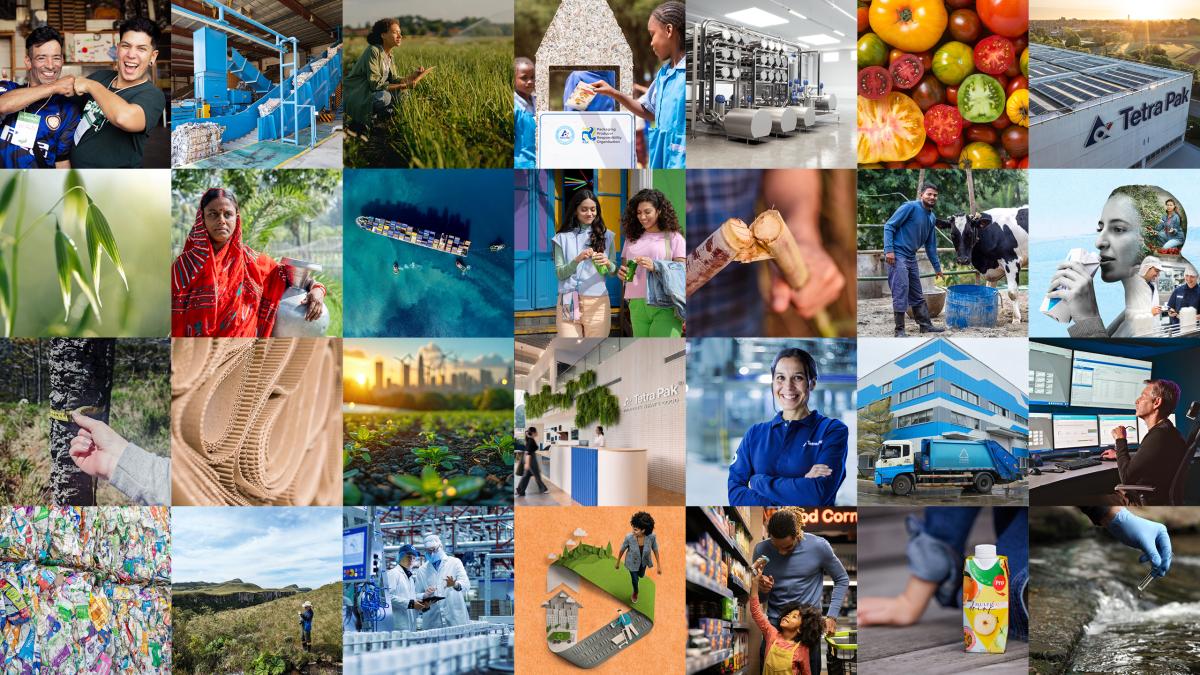Tetra Pak Reveals 20% Greenhouse Gas Emissions Reduction Across Value Chain Since 2019

The company’s 25th Sustainability Report also details:
- An action-oriented approach towards food systems[1] transformation, establishing four key pathways with targets, as launched at COP28.
- The launch of an aseptic beverage carton featuring a paper-based barrier, with 90% renewable content.
- A 47% reduction in operational greenhouse gas (GHG) emissions[2] since 2019.
Tetra Pak launches its 25th Sustainability Report, which tracks the progress the company has made against its sustainability agenda. It focuses on five interdependent areas: food systems, circularity, climate, nature and social sustainability.
The company’s Sustainability Report FY23[3] shows a 20% reduction in value chain[4] GHG emissions and a 47% reduction in GHG emissions across its own operations since 2019. The latter puts Tetra Pak on track to meet its target of net zero GHG emissions in its own operations by 2030[5] and supports the company’s long-term ambition to work together with suppliers, customers and other stakeholders and achieve net-zero GHG emissions across the value chain by 2050.[6]
Another major milestone saw the launch of an aseptic beverage carton featuring a paper-based barrier, reducing its carbon footprint by a third (33%)[7] and bringing the company a step closer to developing the world’s most sustainable food package.[8] This world-first was a result of a €100 million investment in packaging research and development in 2023, with the same investment planned annually for the next five to ten years.
Adolfo Orive, President & CEO at Tetra Pak, comments: “Collaboration across the food industry is ever more important to feed a growing population sustainably. Our global presence and end-to-end solutions give us opportunities every day to collaborate with stakeholders across the value chain, from farmers and food producers, to suppliers, policy makers, consumers and others. We understand the responsibility that comes with this role. We remain committed to playing our part to transform the world’s food systems, to ensure they are more secure, resilient and sustainable.”
Tetra Pak’s Sustainability Report FY23 highlights further company achievements in the past year, and its ongoing initiatives to protect food, people and the planet. These include:
- Expanding School Feeding Programmes: The company helped 64 million children in 49 countries to get access to milk and other nutritious beverages through School Feeding Programmes.
- Accelerating Recycling: Amount of carton packages collected and sent for recycling across the world rose by 7% compared to 2022. Additionally, there was a 14% increase in the volume of polyAl[9] sent for recycling.[10]
- Getting recognition, again, for Leadership in Corporate Transparency and Performance: For the eighth consecutive year, Tetra Pak was included in the CDP Forests ‘A List’. Additionally, the company received an ‘A-‘ rating in Water Security, despite it being the first year of reporting in this area.
- Actively implementing the UN Guiding Principles on Business and Human Rights.
The full FY23 report can be found here.
Tetra Pak PR Contact:
Lucia Freschi
Tetra Pak
Tel: +39 347 2632237
[1] Definition: A food system is a system that embraces all the elements (environment, people, inputs, processes, infrastructure, institutions, markets and trade) and activities that relate to the production, processing, distribution and marketing, preparation and consumption of food and the outputs of these activities, including socio-economic and environmental outcomes. Source: High Level Task Force on Global Food and Nutrition Security (HLTF) (un.org)
[2] Scopes 1, 2 and business travel
[3] Financial year 2023 (FY23) is the period from 1 January 2023 to 31 December 2023
[4] Scopes 1, 2 & 3. Scope 1 covers direct emissions from owned or controlled sources. Scope 2 covers indirect emissions from the generation of purchased electricity, steam, heating and cooling consumed by the reporting company. Scope 3 includes all other indirect emissions that occur in a company’s value chain.
[5] Scopes 1, 2 and business travel – compared to 2019.
[6] Scopes 1, 2 & 3 - compared to 2019.
[7] Carbon Trust™-verified Tetra Pak ‘Carton CO2 Calculator’ model version 9 (valid from 2023-01-01). Scope: cradle-to-grave measurement of a Tetra Brik® Aseptic 200 Slim Leaf carton with plant-based polymers in coating and paper-based barrier compared to a standard Tetra Brik® Aseptic 200 Slim Leaf package. Geography: EU Industry data.
[8] Tetra Pak’s ambition is to create the ‘world’s most sustainable food package. This means creating cartons that are made of renewable or recycled materials, which are responsibly sourced, thereby helping protect and restore our planet's climate, resources and biodiversity; contributing towards low carbon production and distribution; convenient and safe, therefore helping to enable a resilient food system; fully recyclable.
[9] The non-fibre component of carton packages is known as polyAl, which designates the layers of polyethylene and aluminium being used as barrier against oxygen and humidity to protect the food content in aseptic carton packages.
[10] For the reported carton packages collected for recycling, we use, where available, official publicly available data from renowned sources, such as governmental agency, registered recovery organisation, nationwide industry association, NGO, etc., reported on a regular basis using a consistent approach.

